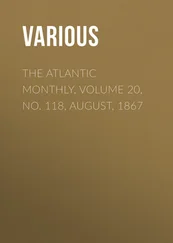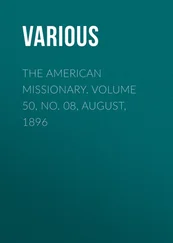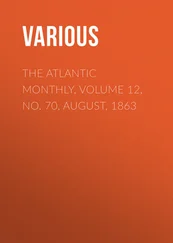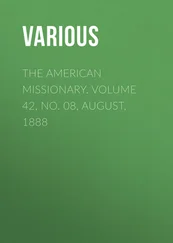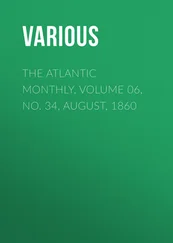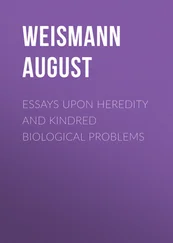August Weismann - Studies in the Theory of Descent, Volume I
Здесь есть возможность читать онлайн «August Weismann - Studies in the Theory of Descent, Volume I» — ознакомительный отрывок электронной книги совершенно бесплатно, а после прочтения отрывка купить полную версию. В некоторых случаях можно слушать аудио, скачать через торрент в формате fb2 и присутствует краткое содержание. Жанр: foreign_antique, foreign_prose, на английском языке. Описание произведения, (предисловие) а так же отзывы посетителей доступны на портале библиотеки ЛибКат.
- Название:Studies in the Theory of Descent, Volume I
- Автор:
- Жанр:
- Год:неизвестен
- ISBN:нет данных
- Рейтинг книги:4 / 5. Голосов: 1
-
Избранное:Добавить в избранное
- Отзывы:
-
Ваша оценка:
- 80
- 1
- 2
- 3
- 4
- 5
Studies in the Theory of Descent, Volume I: краткое содержание, описание и аннотация
Предлагаем к чтению аннотацию, описание, краткое содержание или предисловие (зависит от того, что написал сам автор книги «Studies in the Theory of Descent, Volume I»). Если вы не нашли необходимую информацию о книге — напишите в комментариях, мы постараемся отыскать её.
Studies in the Theory of Descent, Volume I — читать онлайн ознакомительный отрывок
Ниже представлен текст книги, разбитый по страницам. Система сохранения места последней прочитанной страницы, позволяет с удобством читать онлайн бесплатно книгу «Studies in the Theory of Descent, Volume I», без необходимости каждый раз заново искать на чём Вы остановились. Поставьте закладку, и сможете в любой момент перейти на страницу, на которой закончили чтение.
Интервал:
Закладка:
But even if seasonal dimorphism is to be ascribed to heterogenesis, it must by no means be asserted that those cases of cyclical propagation hitherto designated as heterogenesis are completely identical with seasonal dimorphism. Their identity extends only to their origin and manner of development, but not to the mode of operation of the causes which bring about their transformation. Both phenomena have a common mode of origination, arising from similar (monomorphic) sexual generations and course of development, a cycle of generations with gradually diverging characters coming into existence by the action of alternating influences. On the other hand, the nature of the changes by which the secondary differs from the primary generation may be referred to another mode of action of the exciting causes. In seasonal dimorphism the differences between the two generations are much less than in other cases of heterogenesis. These differences are both quantitatively less, and are likewise qualitative, affecting only characters of biological insignificance. 41The variations in question are mostly restricted to the marking and colouring of the wings and body, occasionally affecting also the form of the wing, and in a few cases the size of the body ( Plebeius Amyntas ), whilst the bodily structure – so far at least as my investigations extend – appears to be the same in both generations. 42
The state of affairs is quite different in the remaining cases of heterogenesis; here the entire structure of the body appears to be more or less changed, and its size is often very different, nearly all the internal organs differing in the two generations. According to Claus, 43“we can scarcely find any other explanation of the mode of origination of heterogenesis than the gradual and slow advantageous adaptation of the organization to important varying conditions of life” – a judgment in which this author is certainly correct. In all such cases the change does not affect unimportant characters, as it does in butterflies, but parts of biological or physiological value; and we cannot, therefore, consider such changes to have originated through the direct action of altered conditions of life, but indirectly through natural selection or adaptation.
Thus, the difference between seasonal dimorphism and the other known cases of heterogenesis consists in the secondary form in which the species appears in the former originating through the direct action of external conditions, whilst in the latter this form most probably originates through the indirect action of such influences. The first half of the foregoing proposition is alone capable of provisional proof, but it is in the highest degree probable that the latter half is also correct. Naturally we cannot say to what extent the direct action of external conditions plays also a part in true heterogenesis, as there have been as yet no experiments made on its origin. That direct action, working to a certain extent co-operatively, plays only a secondary part, while the chief cause of the change is to be found in adaptation, no one can doubt who keeps in view, for instance, the mode of propagation discovered by Leuckart in Ascaris nigrovenosa . In this worm, the one generation lives free in the water, and the other generation inhabits the lungs of frogs, the two generations differing from one another in size of body and structure of internal organs to an extent only possible with the true Nematoda.
To prevent possible misunderstanding, let it be finally noted – even if superfluous – that the changes causing the diversity of the two generations in seasonal dimorphism and heterogenesis are not of such a nature that the value of different “specific characters” can be attached to them. Distinctly defined specific characters are well known not to occur generally, and it would therefore be erroneous to attach but little value to the differences in seasonal dimorphism because these chiefly consist in the colouring and marking of the wings. The question here under consideration is not whether two animal forms have the value of species or of mere varieties – a question which can never be decided, since the reply always depends upon individual opinion of the value of the distinctions in question, and the idea of both species and varieties is moreover purely conventional. The question is, rather, whether the distinguishing characters possess an equal constancy – that is, whether they are transmitted with the same force and accuracy to all individuals; and whether they occur, therefore, in such a manner that they can be practically employed as specific characters. With respect to this, it cannot be doubtful for a moment that the colouring and marking of a butterfly possess exactly the same value as the constant characters in any other group of animals, such as the palate-folds in mice, the structure of the teeth in mammals, the number and form of the wing and tail feathers in birds, &c. We have but to remember with what wonderful constancy often the most minute details of marking are transmitted in butterflies. The systematist frequently distinguishes between two nearly allied species, as for instance in the Lycænidæ
Конец ознакомительного фрагмента.
Текст предоставлен ООО «ЛитРес».
Прочитайте эту книгу целиком, купив полную легальную версию на ЛитРес.
Безопасно оплатить книгу можно банковской картой Visa, MasterCard, Maestro, со счета мобильного телефона, с платежного терминала, в салоне МТС или Связной, через PayPal, WebMoney, Яндекс.Деньги, QIWI Кошелек, бонусными картами или другим удобным Вам способом.
1
A most minute and exact description of the newly hatched larva of Chionobas Aëllo is given by the American entomologist, Samuel H. Scudder. Ann. Soc. Ent. de Belgique, xvi., 1873.
2
I am aware that this certainly cannot be said of philosophers like Lotze or Herbert Spencer; but these are at the same time both naturalists and philosophers.
3
“Über die Artrechte des Polyommatus Amyntas und Polysperchon .” Stett. ent. Zeit. 1849. Vol. x. p. 177–182. [In Kirby’s “Synonymic Catalogue of Diurnal Lepidoptera” Plebeius Amyntas is given as a synonym and P. Polysperchon as a var. of P. Argiades Pall. R.M.]
4
“Die Arten der Lepidopteren-Gattung Ino Leach, nebst einigen Vorbemerkungen über Localvarietäten.” Stett. ent. Zeit. 1862. Vol. xxiii. p. 342.
5
[Eng. ed. W. H. Edwards has since pointed out several beautiful cases of seasonal dimorphism in America. Thus Plebeius Pseudargiolus is the summer form of P. Violacea , and Phyciodes Tharos the summer form of P. Marcia . See Edwards’ “Butterflies of North America,” 1868–79.]
6
[Eng. ed. I learn by a written communication from Dr. Speyer that two Geometræ, Selenia Tetralunaria and S. Illunaria Hüb., are seasonally dimorphic. In both species the winter form is much larger and darker.] [ Selenia Lunaria , S. Illustraria , and some species of Ephyra ( E. Punctaria and E. Omicronaria ) are likewise seasonally dimorphic. For remarks on the case of S. Illustraria see Dr. Knaggs in Ent. Mo. Mag., vol. iii. p. 238, and p. 256. Some observations on E. Punctaria were communicated to the Entomological Society of London by Professor Westwood in 1877, on the authority of Mr. B. G. Cole. See Proc. Ent. Soc. 1877, pp. vi, vii. R.M.]
Читать дальшеИнтервал:
Закладка:
Похожие книги на «Studies in the Theory of Descent, Volume I»
Представляем Вашему вниманию похожие книги на «Studies in the Theory of Descent, Volume I» списком для выбора. Мы отобрали схожую по названию и смыслу литературу в надежде предоставить читателям больше вариантов отыскать новые, интересные, ещё непрочитанные произведения.
Обсуждение, отзывы о книге «Studies in the Theory of Descent, Volume I» и просто собственные мнения читателей. Оставьте ваши комментарии, напишите, что Вы думаете о произведении, его смысле или главных героях. Укажите что конкретно понравилось, а что нет, и почему Вы так считаете.


